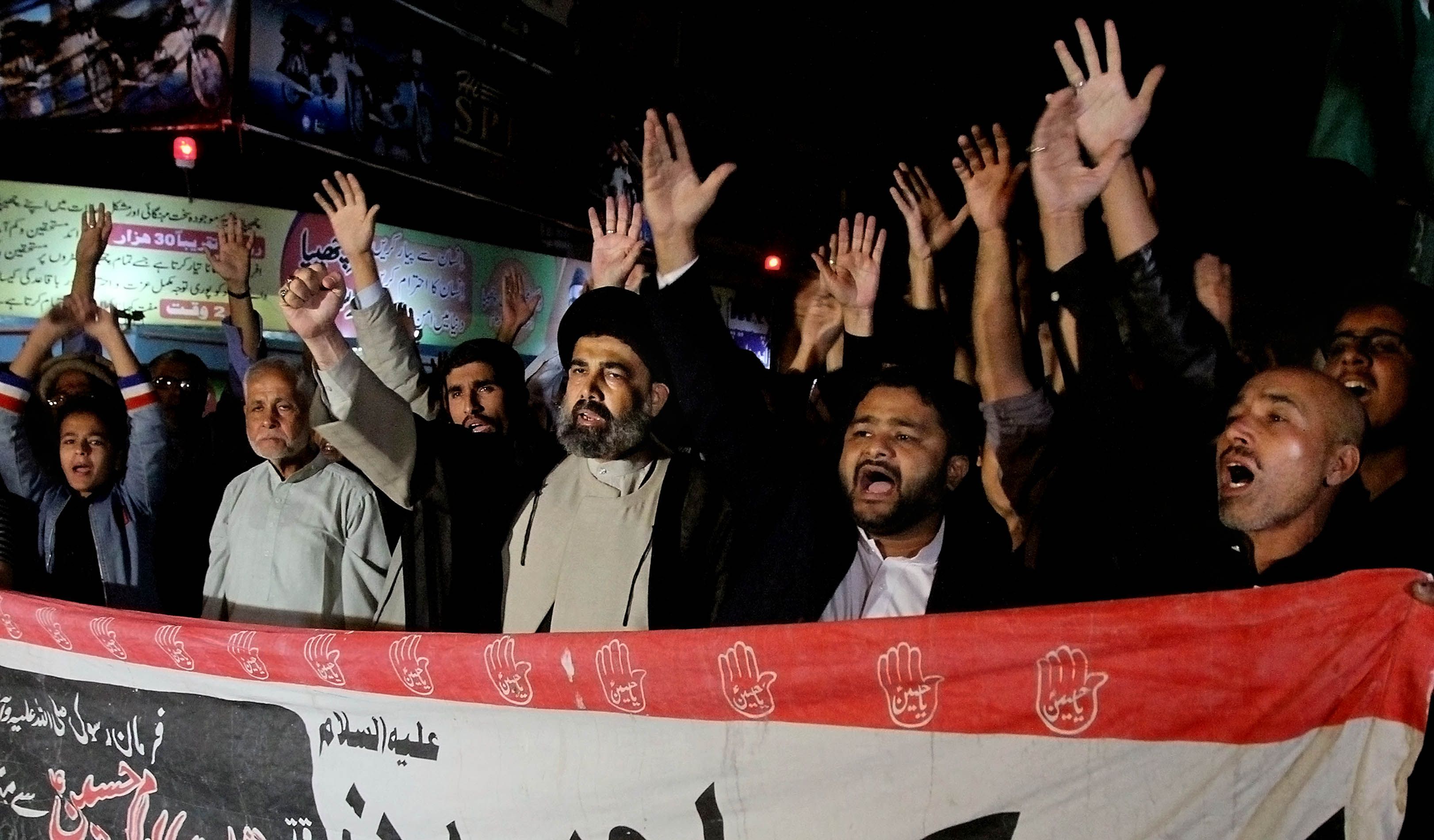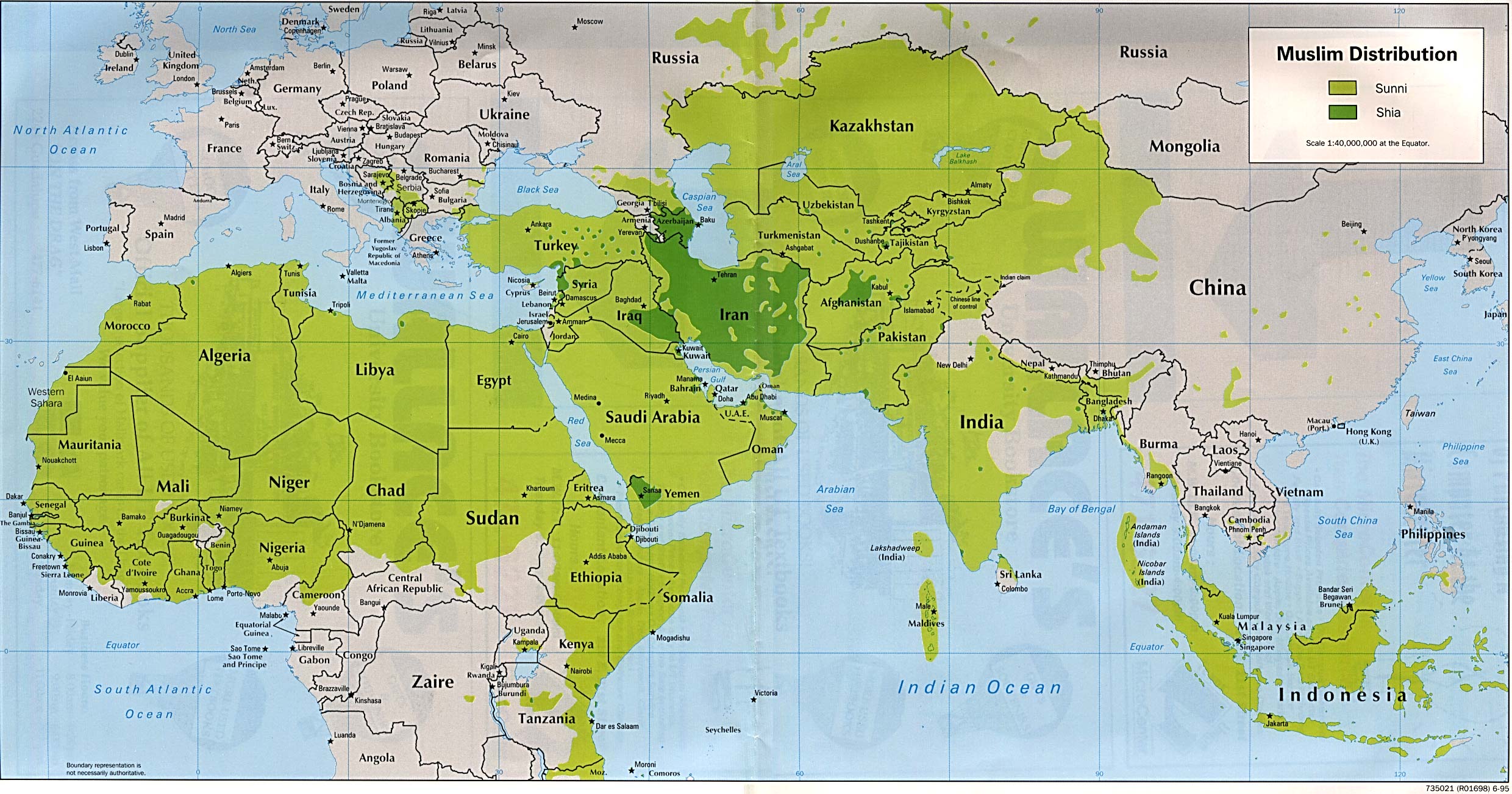When we think about Iran, one of the first things that often comes to mind is its religious identity. It's a place where faith, in a way, truly shapes so much of daily life and even how the country interacts with others. For many years, reports have tried to give us a picture of just how many people follow different paths there, especially when it comes to the two main branches of Islam. You see, the numbers can be a little bit varied depending on when and where you look, but a few things are pretty clear.
More or less, nearly all of Iran's residents identify as Muslim. Back in 2011, for instance, it was estimated that a very, very large portion, something like 99.4 percent of the total population, considered themselves followers of Islam. That leaves just a little bit, around 0.6 percent, for folks who practice other spiritual traditions, like Zoroastrianism or Judaism. So, it's pretty much a Muslim country, as a matter of fact, when you look at the overall picture.
This strong religious character, particularly its leaning toward one specific branch of Islam, does actually have a big effect on things. It's not just about what people believe; it also plays a part in the country's culture, the way its own government makes choices, and even how it gets along with its neighbors. It's quite interesting to consider how this religious makeup influences so many different facets of the nation, you know, in a broader sense.
- Trump Signature Meaning
- Tennessee Brando Biography
- Emma Anthurin
- Honeytoon Free
- Xxx Anjali Arora Viral Video
Table of Contents
- What Makes Up the Shia and Sunni Population in Iran?
- The Dominant Faith - Shia and Sunni Population in Iran
- Where Do Iran's Sunni Communities Live?
- How Does Iran's Religious Makeup Shape Its World Connections?
What Makes Up the Shia and Sunni Population in Iran?
When we talk about the religious landscape of Iran, it's pretty much dominated by Islam, as we touched on earlier. But within Islam, there are two main paths: Shia and Sunni. In Iran, the Shia branch holds the most sway. There are different figures floating around, but many sources suggest that somewhere between 90 to 95 percent of the Muslim population identifies as Shia. Some reports even put the Shia proportion at about 90 percent of the entire country's people, while others mention it as "the vast majority." So, it's clearly the prevailing religious group there, you know.
On the other side of the coin, the Sunni Muslim population in Iran is a smaller group. Government estimates often place this community at about 5 to 10 percent of the total population. However, some other accounts have suggested figures like 7 to 10 percent, or even as high as 15 percent in certain contexts. So, there's a little bit of a range in these reported numbers, but the consistent message is that Sunnis form a minority within the country. This is quite distinct from the global picture, where Sunnis actually make up a commanding majority, something like 85 to 90 percent, of the world's entire Muslim population. So, Iran is, in a way, quite unique in that regard.
How Many People Call Iran Home?
It's always good to have a sense of the sheer number of people we're talking about when we discuss population figures. According to government estimates, Iran's population was around 85.0 million people in mid-2020. That number grew a bit, reaching about 86.8 million by mid-2022. These figures give us a pretty good idea of the overall size of the country's population, which is quite substantial, as a matter of fact. When you consider these numbers, the percentages for Shia and Sunni populations start to give you a clearer picture of the actual number of individuals in each group.
- Aditi Mistry Nude Video
- Luxury Romantic Getaways
- Aditi Mistry Naked
- Aditi Mistry App Videos
- Jameliz Benitez Smith Leaks
The Dominant Faith - Shia and Sunni Population in Iran
The predominant character of Iran is very much rooted in Shia Islam. This particular branch, specifically the Ithnā ʿasharī, or Twelver, Shiʿi branch, is the official state religion. This means it's not just the faith of most people; it's also deeply woven into the fabric of the nation's governance and public life. This profound Shia majority really does impact a lot of things, from the daily cultural expressions you might see to the decisions made about what goes on inside the country, domestically speaking. It's a foundational element of the country's identity, you know.
Shia Muslims form the majority in a few other countries too, like Iraq, Bahrain, and Azerbaijan. This is a pretty interesting point because it shows that while Sunnis are the overall majority globally, there are specific places where Shia communities are the prevailing group. On the other hand, Sunni Muslims are the majority in many other nations, such as Saudi Arabia, Egypt, Turkey, and Indonesia. So, the way the population is spread out, in terms of Shia and Sunni, really does change quite a bit from one part of the world to another. It's not a uniform picture, basically.
Are There Other Faiths in Iran?
While Islam, especially the Shia branch, is overwhelmingly dominant, Iran is also home to small communities of people who follow other religious paths. You'll find groups of Christians, Jews, and Zoroastrians living throughout the country. These communities, though much smaller in number compared to the Muslim population, are still a part of the nation's diverse religious makeup. So, it's not just a single faith, even though one is clearly the most widespread, you know, in a way.
Where Do Iran's Sunni Communities Live?
The Sunni Muslim population in Iran is not, as a matter of fact, a single, uniform community spread evenly across the country. Instead, most Sunnis belong to specific ethnic minority groups. For example, many Turkmen people are Sunni Muslims, and they typically live in the northeastern parts of the country. The Baluch people, who are also largely Sunni, tend to reside in the southeastern provinces. Kurds, another ethnic group with a significant Sunni presence, are usually found in the northwest. And some of Iran's Arab population also identifies as Sunni, living in the southwest, though it's worth noting that Iranian Arabs can be both Sunni and Shia. So, their distribution is quite regional, basically, tied to these distinct ethnic groups.
There's also a notable presence of Afghan refugees, economic migrants, and people who have been displaced, and these groups contribute a pretty significant number to the Sunni population in Iran. However, getting precise statistics on the breakdown of Shia and Sunni within this particular refugee population can be quite challenging. So, while we know they add to the Sunni numbers, the exact figures are a little bit harder to pin down, you know.
It's also worth pointing out a specific area like West Azarbaijan. This province, located in the northwest of Iran, has a rather substantial Sunni population, accounting for about 42 percent of its residents. This shows that while Sunnis are a minority nationally, there are certainly pockets where their presence is much more pronounced, offering a different picture than the national average, you know, in some respects.
What About the Diverse Shia and Sunni Population in Iran?
The fact that Iran's Sunni population is not a single, unified group is an important detail. It means that these communities have different cultural backgrounds, languages, and traditions, even while sharing a common religious branch. This adds a layer of richness and diversity to the country's overall human fabric. It's not just a simple division; it's a mix of various ethnic identities that contribute to the broader picture of the Shia and Sunni population in Iran. This is actually quite common in many countries where religious groups are intertwined with ethnic groups, as a matter of fact.
How Does Iran's Religious Makeup Shape Its World Connections?
The predominantly Shia character of Iran has, for quite some time, made things a bit complex in its relationships with countries nearby. You see, in places where Sunni Islam is the more common faith, Iran has sometimes found itself feeling a little isolated. This is because shared religious identity can often play a big part in how nations connect with each other. When there's a different dominant faith, it can create certain challenges or, you know, just make things a little more complicated in terms of diplomacy and regional alliances. It's a pretty significant factor in their foreign policy, really.
However, Iran also works quite actively to build strong connections with nations that have meaningful Shia communities. A couple of notable examples include Yemen and Lebanon. In these cases, Iran tries to foster cooperative relationships, and these ties are often based on that shared religious identity. So, while it might face some distance from Sunni-majority neighbors, it makes a point of reaching out to those with similar religious demographics. This shows a rather deliberate approach to building alliances based on common spiritual ground, as a matter of fact.
What Does This Mean for Iran's Shia and Sunni Population in the Wider Region?
Considering the Shia and Sunni population in Iran within the context of the wider region reveals some interesting dynamics. For instance, Iraq, which also has a significant Shia Muslim population, is actually expected to see its Shia numbers grow at a faster rate than Iran's. This kind of demographic shift can have implications for regional power balances and relationships over time. Historically, we've seen how religious differences have played a part in conflicts, like when Saddam Hussein's regime in Iraq, which was dominated by Sunnis, clashed with Iran. So, these population distributions and their historical interactions are pretty significant, you know, for understanding the broader regional picture.
In essence, Iran's population is overwhelmingly Muslim, with the vast majority identifying as Shia, which is also the official state religion. A smaller, but still notable, Sunni minority exists, often tied to specific ethnic groups and regional areas. This internal religious makeup has a clear influence on Iran's culture and domestic choices, and it also shapes its connections with other nations, leading to both challenges and opportunities for collaboration based on shared religious identity. The numbers for the Shia and Sunni population in Iran, while varied in some reports, consistently show a Shia-dominant nation within a broader Muslim world where Sunnis are the global majority.
Related Resources:


/difference-between-shia-and-sunni-muslims-2003755-v3-HL-0705e1a1776440348861183d19a2f5bd.png)
Detail Author:
- Name : Hailie Shanahan DVM
- Username : al.mayer
- Email : torphy.marty@yahoo.com
- Birthdate : 1995-11-28
- Address : 4920 Kyleigh Shore Krajcikberg, AL 90770
- Phone : 409.471.2324
- Company : Howell, Ortiz and Greenholt
- Job : Well and Core Drill Operator
- Bio : Excepturi neque magni ex. Odio assumenda vel consequatur molestiae blanditiis assumenda voluptatibus. Enim distinctio accusantium rem inventore. Tempora iste sed nam molestiae et.
Socials
linkedin:
- url : https://linkedin.com/in/aheaney
- username : aheaney
- bio : Quidem sit molestiae voluptates vel.
- followers : 374
- following : 295
twitter:
- url : https://twitter.com/heaneya
- username : heaneya
- bio : Sed illum et ea quos assumenda expedita dolores. Molestiae qui saepe quas nihil libero eveniet repellat. Optio praesentium animi minus quae.
- followers : 2268
- following : 2340
facebook:
- url : https://facebook.com/alexanneheaney
- username : alexanneheaney
- bio : Esse eius eos aut est fuga quo libero.
- followers : 552
- following : 1318